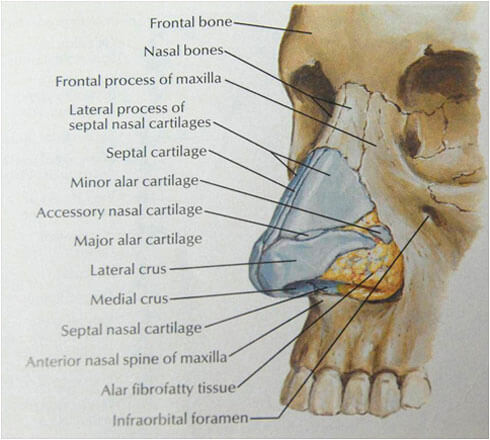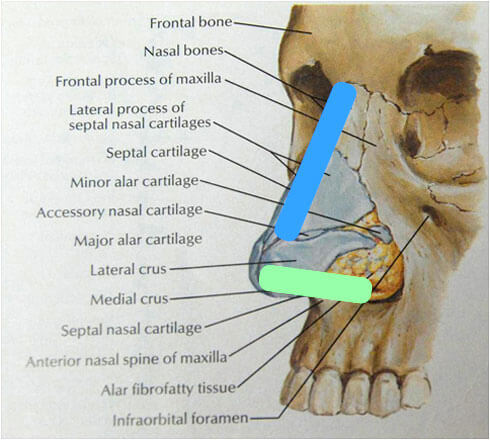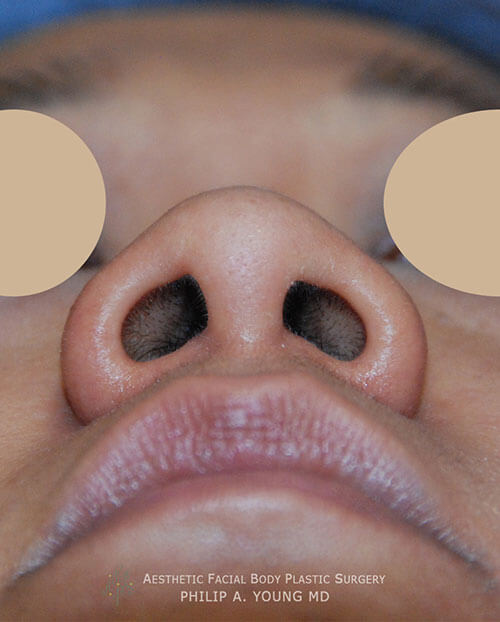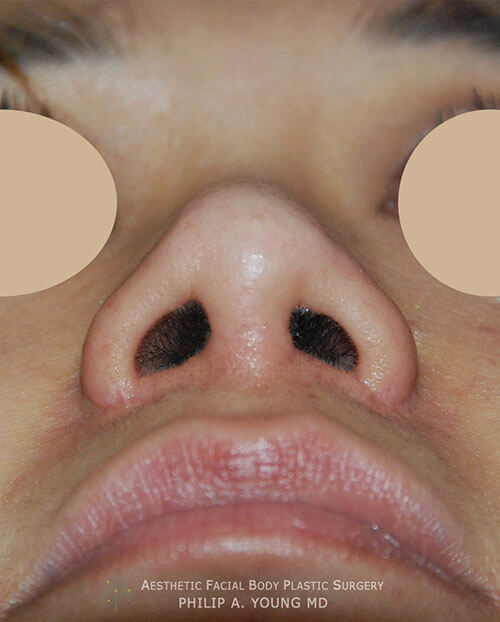You can maintain your ethnicity and feel beautiful for your next big event in your life. Improve the looks of your nose with a plastic surgeon that specializes in the Asian population.
Dr. Philip Young is a published author and an Asian rhinoplasty expert with more than 12 years of experience. He has lectured about the specifics of Asian rhinoplasty in multiple cities in China (Linyi, Jinan) and Vietnam (Saigon, Hue).
Performing Asian rhinoplasty surgery is a unique segment in facial plastic surgery. There is a contrast in the need to reduce the nose in rhinoplasties for Caucasian noses as opposed to Asian noses. The Asian nose faces the challenge of building up the nose instead of reducing and taking it down. There is a need to augment and bring in tissue or implants into the nose and build it up. So what are the options for building up the Asian nose in an Asian rhinoplasty?
Dr. Young’s most groundbreaking achievement occurred during his fellowship in facial plastic and reconstructive surgery. After extensive training, he noticed less than optimal results from some of the best surgeons in the world.
Why was that? What was happening? What Dr. Young discovered was the goals the surgeons were striving for had inadequacies with room for improvement. With facial plastic surgery, understanding the aesthetics of the face is so important. He discovered that the prevailing theories of beauty were flawed.
Dr. Young spent four years refining his thoughts culminating in his new theory on facial beauty called the Circles of Prominence. This groundbreaking theory received the Sir Harold Delf Gillies Award for best basic science research paper from Dr. Young’s peers at the American Academy of Facial Plastic and Reconstructive Surgery in 2005. Since that time, his theory has been acclaimed across the world.

In Asia, nasal implants are usually the most popular choice. In America, there is a general fear against implants and even frank disdain of surgeons. The reason concerns the rejection of the implant leading to significant cosmetic issues that can sometimes be manifested with the extrusion of the implant.
Extrusion is when the implant finds its way through the skin of the nose and becomes exposed to the outside. This is an obvious fear for someone considering Asian rhinoplasty. In Asia, there are thousands of people with implants with no significant issues. There have been many long lasting results achieved with implants in Asia and the United States.
According to recent studies, the risk of implant rejection is low, in the range of 3-6% for silicone, Gore-Tex or Porous Polyethylene. Rejection problems occur because of the way implants are used in the nasal tip area. Many of the extrusions seem to occur at the nasal tip or inside the nose near the tip area because the implants are placed directly next to the nasal tip skin.
Usually when implants are placed into the nasal tip, there is pressure being placed when you increase the height of the nasal tip with implants. Dr. Young decreases this risk by using implants or cartilage to project the natural cartilage and have the natural cartilage against the nasal tip skin. This significantly decreases the extrusion and infection in this area.

There is a big advantage in using your own cartilage for your Asian rhinoplasty. If you are concerned with implants, Dr. Young can use your own cartilage if you choose to.
The most popular options for cartilage come from the ears, septum and rib cartilage. Some surgeons consider bone from your skull or hip. Dr. Young has used all these different options and can do this for you as well. Many patients do not wish to be involved in such an extensive procedure and elect to augment their nose using implants.

Before Acne Topical Skin Care Regime to Treat Active Acne

After Acne Topical Skin Care Regime to Treat Active Acne Breakouts after about one month of treatment
Note: Individual results will vary. Images do not constitute a promise or representation of any particular outcome or experience.
Dr. Young typically augments the nasal bridge with an implant. He uses mainly medpor or silicone. He prefers Medpor given that, after 12 weeks, the body incorporates the implant and grows it so it can function like your own tissue.
For the nasal tip area, Dr. Young likes to present the tip cartilages naturally against the nasal tip skin to decrease the risks of extrusion in the area. He employs septal cartilage or medpor implants that are sewn to the septal cartilage which works as a strut of force that the nasal tip cartilages can be sewn on. With the nasal tip cartilages sewn in the more projected position, they can be refined to create the shape of the nasal tip that you desire.
During your initial consultation with Dr. Young, will have the opportunity to ask questions and relay any concerns and fears with him and our patient care coordinators.
You can email, call 425-990-3223 or text 425-341-3893 to set up an appointment. If you live out of town, we can schedule a phone consultation with you.
Here at AFPS, our staff will take the time and care to set you up with a great treatment plan. Treat yourself today to a beautiful more rejuvenated look today!
